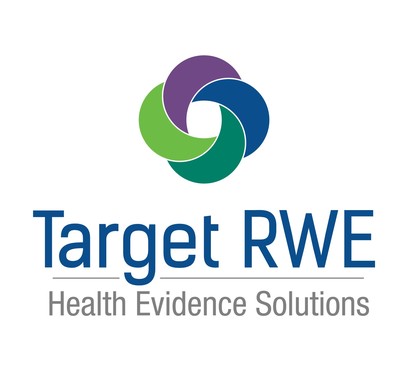
DURHAM, N.C., May 23, 2021 /PRNewswire/ — Research presented today at Digestive Disease Week (DDW) 2021 evaluated the prevalence and predictors of immunomodulator use as concomitant therapy with two commonly prescribed biologics, vedolizumab (Entyvio) or ustekinumab (Stelara), in patients with inflammatory bowel disease (IBD). Data from Target RWE’s TARGET-IBD large longitudinal cohort Immunomodulators are Commonly Used as Concomitant Therapy with Vedolizumab or Ustekinumab: TARGET-IBD Real World Cohort was selected for the Poster of Distinction Award.
Global IBD prevalence has risen substantially over the past 30 years.1 Biologics neutralize proteins in the body that cause inflammation; however, not all biologics work in the same way. Newer biologics, such as ustekinumab and vedolizumab, have been associated with lower risk of infection than anti-tumor necrosis factor agents (anti-TNFs). The addition of an immunomodulator in combination therapy may limit this potential benefit, especially in those over age 65, without reducing immunogenicity.
“Immunogenicity occurs when a treatment provokes an immune response against itself. It is a serious limitation of biologic therapy used to treat inflammatory bowel disease such as Crohn’s disease (CD) or ulcerative colitis (UC),” said Megan Lutz, MD, Fellow at the University of Wisconsin School of Medicine and Public Health and lead author. “We need to further research efficacy and safety of using an immunomodulator in conjunction with newer biologic therapies such as ustekinumab or vedolizumab to decrease immunogenicity in patients with IBD, since we could avoid unnecessary risks with otherwise generally safe therapies.”
Key findings include:
- Among patients with CD on vedolizumab or ustekinumab at enrollment, and patients with UC on vedolizumab at enrollment, combination therapy was used in 28.2% and 19.0% of patients, respectively.
- High rates of previous biologic exposure: 73.8% of patients treated with vedolizumab had previous anti-TNF exposure, and 89.6% of patients treated with ustekinumab had anti-TNF exposure, of whom 30.8% also had vedolizumab exposure.
- In patients with CD on ustekinumab at enrollment, combination therapy was more common at community sites and in patients younger than 65 years old.
A separate study from TARGET-IBD, Biologic-naïve Patients with Crohn’s Disease are More Likely to Achieve Mucosal Healing than Biologic-experienced Patients: TARGET-IBD Real World Cohort, found that, consistent with observations from clinical trials, biologic-naive patients in a real-world CD cohort were significantly more likely to achieve mucosal healing than biologic-experienced patients.
TARGET-IBD is a study of patients with IBD receiving usual care at community and academic practices in the U.S. Clinical data from secured electronic medical records was analyzed for patients enrolled July 2017 to November 2020.
About Target RWE
Target RWE is a health evidence solutions company generating innovative real-world evidence (RWE) for healthcare partners. Target RWE’s novel NoviSci analytics platform enables the analysis and visualization of health data using state-of-the-science epidemiological methods and scientific principles, providing a highly adaptive environment to accelerate insights and reproducible research. Learn more at www.targetrwe.com.
CONTACT:
Kayla Slake
kslake@targetrwe.com
984.234.0268 ext. 205
View original content to download multimedia:http://www.prnewswire.com/news-releases/target-rwe-research-presented-at-ddw-2021-shows-high-rates-of-biologic-combination-therapy-and-previous-biologic-exposure-in-ibd-population-301297219.html
SOURCE Target RWE
Source link
The content is by PR Newswire. Headlines of Today Media is not responsible for the content provided or any links related to this content. Headlines of Today Media is not responsible for the correctness, topicality or the quality of the content.


